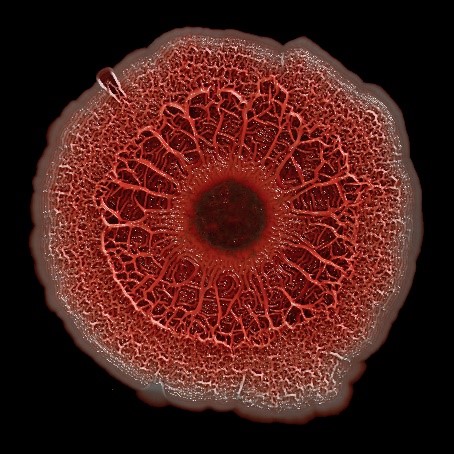A biofilm is a highly organized community of microorganisms that develops naturally on certain surfaces. Typically, biofilms are made up of microbes and an extracellular matrix that they produce. This matrix can include polysaccharides (chains of sugars), proteins, lipids, DNA, and other molecules. The matrix gives the biofilm structure and helps it stick to a surface.
Formation of a biofilm often involves a process called quorum sensing. In this process, microbes detect when they reach a certain population density and change their behavior in ways that help them function as a community.
Biofilms are common and help microbes protect themselves from threats, such as extreme environmental conditions and single-celled animals called protozoa that feed on other microorganisms.

Humans can also benefit from biofilms. For example, engineers harness natural biofilm development for the treatment of wastewater, decontamination of soil, and extraction of copper and other minerals from metal ore. But biofilms are highly resistant to antibiotic medicines and can be harmful to humans, like when they form on implanted medical devices. They also contribute to common oral diseases such as tooth decay and gum disease, and they can cause chronically infected foot ulcers in people with diabetes.
NIGMS-Funded Biofilm Research
Biomedical scientists are working to better understand disease-causing biofilms and develop new treatments to combat them. Some NIGMS-supported researchers are:
- Investigating ways to disrupt quorum sensing
- Looking at natural products as potential starting points for biofilm-fighting medicines
- Studying proteins that play key roles in holding biofilms together
- Exploring how drugs used for anesthesia affect biofilm growth
Learn about other scientific terms with the NIGMS glossary.

This post is a great supplement to Pathways: The Superbugs Issue.
Pathways describes antibiotic resistant superbugs, and this post describes biofilms, which are also antibiotic resistant.
Learn more in our Educator’s Corner.


The fundamentals of bio films essentially involve polysaccharides and cell cell interaction.The classical bio films are either composed of bacteria or yeasts)(fungal) Thus both prokaryote and eukaryotes are involved. My expertise is more fungal than bacteria. So I will limit myself to fungal biofilms. Here, the work of Nickerson and his collaborators clearly demonstrate that dimorphism in yeasts is mediated by nitrite/nitrate ratios. I humbly submit that those who investigate fungal biofilms familiarize themselves with Nicholson’s papers.